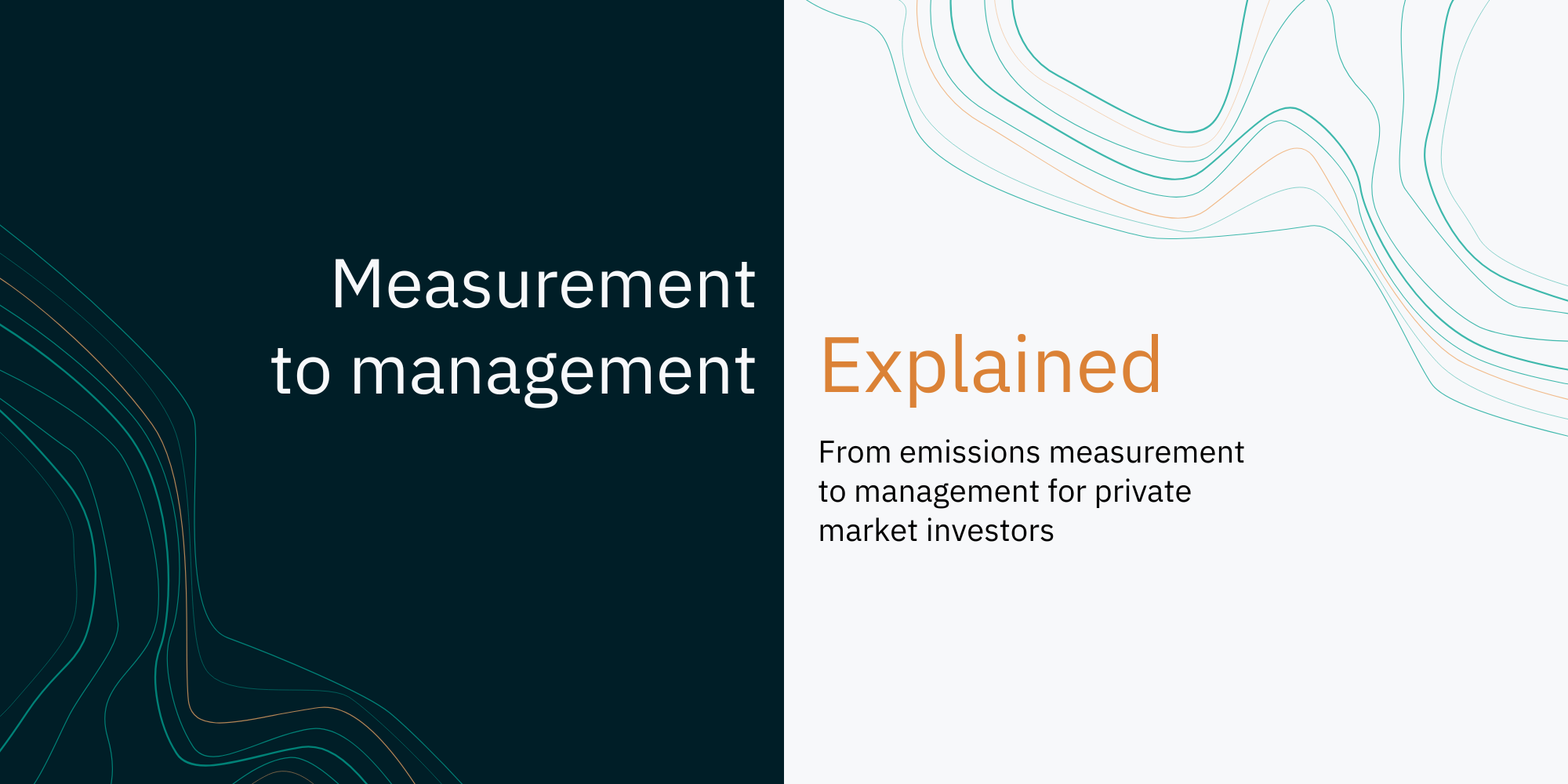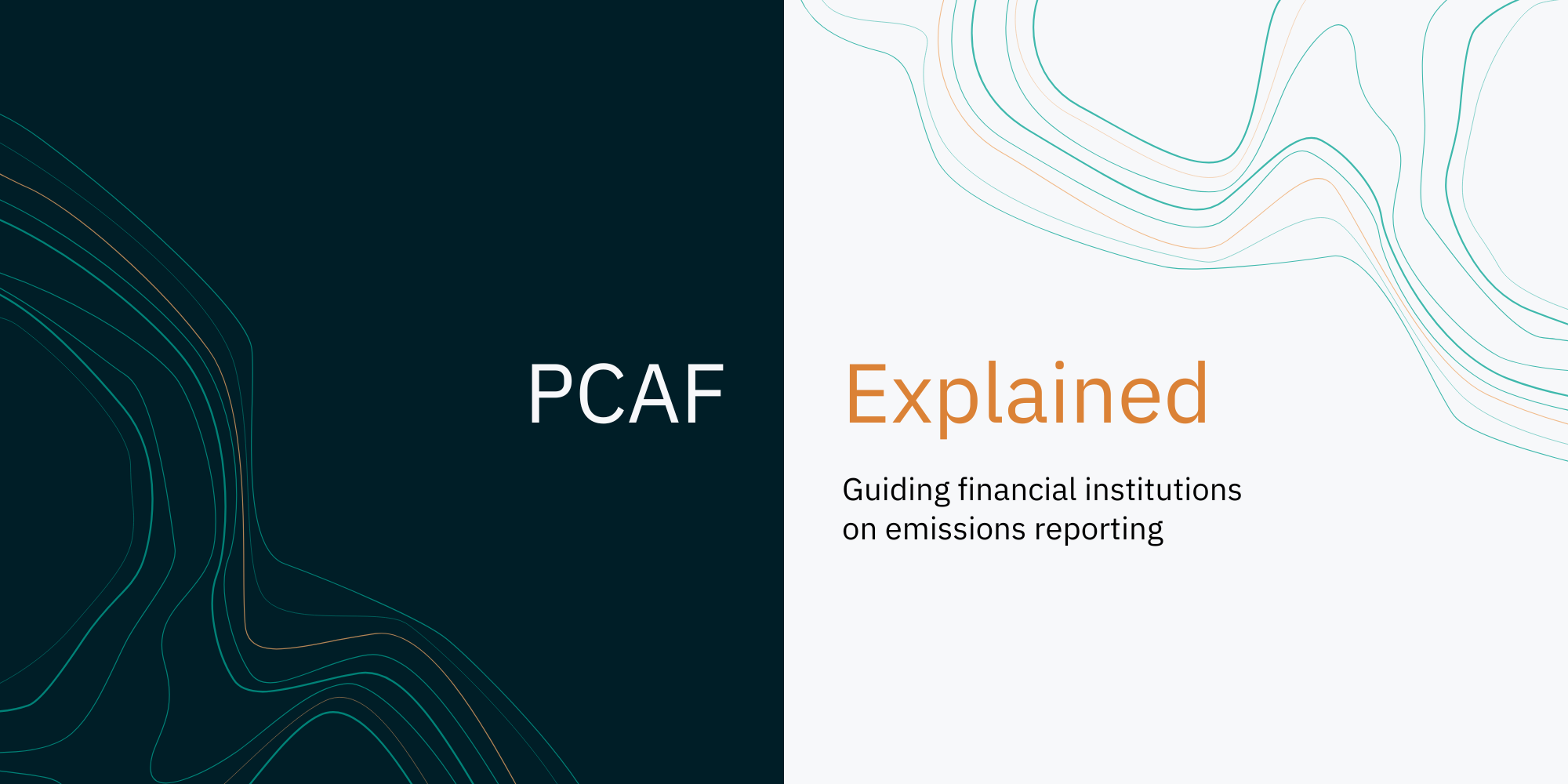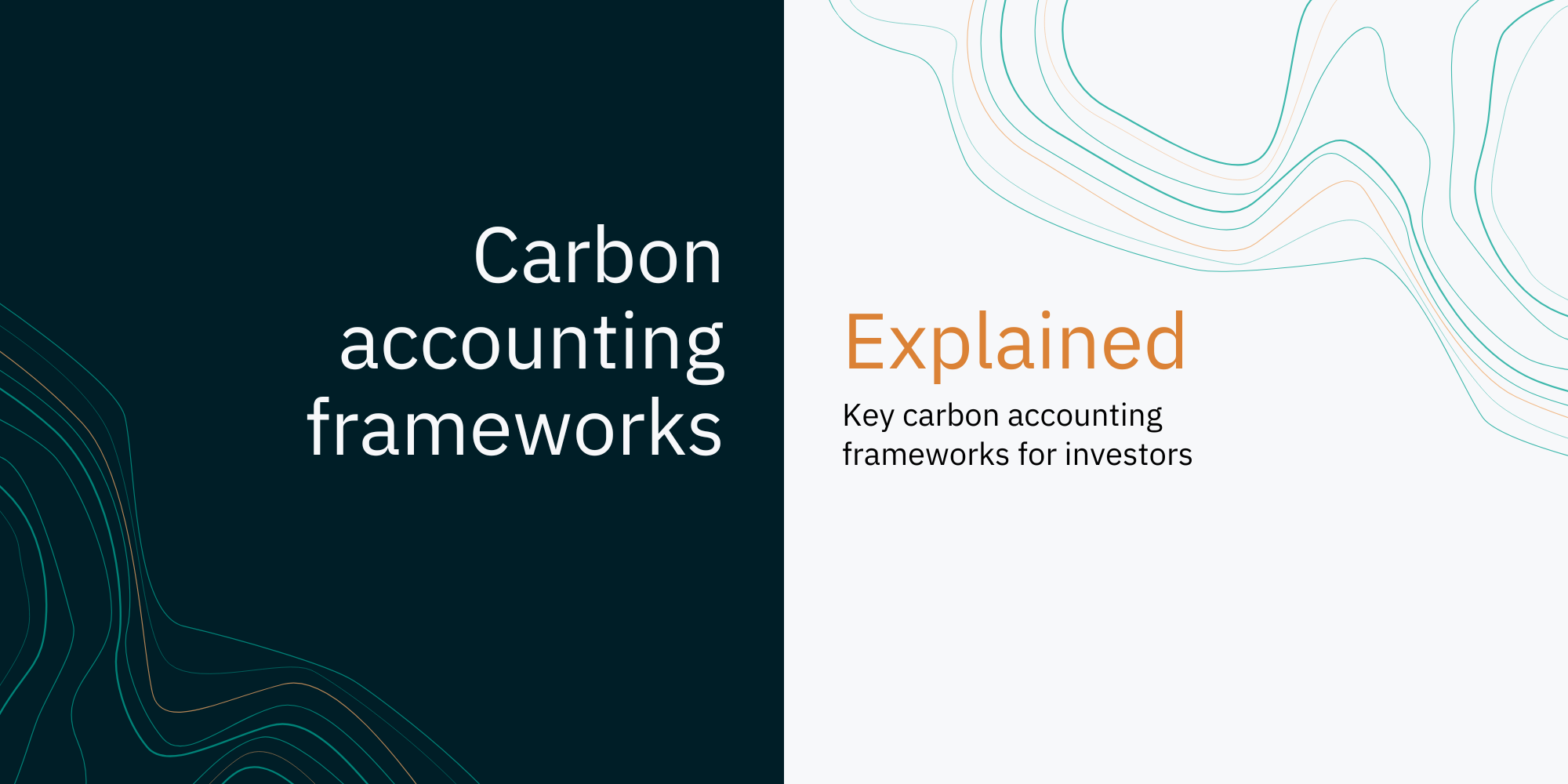Sustainability and climate-related financial disclosure requirements, in line with the ISSB standards, will soon be mandatory for private investors in Australia and globally. For investors, this means that measuring and managing financed emissions – greenhouse gas (GHG) emissions that result from lending and investment activities – will become mandatory.
In this article, we explore the key stages involved in the measurement and management of financed emissions. This encompasses a three-stage process which moves from Estimate > Actual > Action, aimed at helping investors to improve the accuracy of the data being used to calculate their financed emissions.
By following this process, and gradually improving data accuracy, investors will be better equipped to:
- Meet the requirements of impending regulation,
- Leverage the opportunities associated with a lower carbon portfolio, and
- Develop a climate change portfolio transition plan.
Key sections in this article include:
- Estimate: Gain initial insights into carbon hotspots
- Actuals: Directly engage with portfolio companies to increase data quality
- Action: How to manage financed emissions
- The Pathzero solution
Estimate: Gain initial insights into carbon hotspots
For investors, the challenge of measuring financed emissions usually comes from the need to access data from a huge list of underlying investee companies, often owned in a complex web of fund structures. An additional problem for private market investors is that their portfolio companies do not often publicly report their carbon data.
Estimated data is a good place to start to establish an emissions baseline. It can come in a variety of forms and doesn’t necessarily have to be perfectly accurate – just decision-useful and actionable.
One approach is to use data from public companies as a proxy, or estimates from ratings agencies, but this will most often lack the reliability required to inform investment decision-making.
A more rigorous approach to estimating financed emissions is using a clear global standard to enable useful comparison of data at the company, portfolio, and industry levels. The ‘standard’, developed by the Partnership for Carbon Accounting Financials (PCAF) lays out a rigorous methodology for financed emissions measurement, including the use of estimates. It has rapidly become the global GHG accounting and reporting standard for financed emissions and has received a tick of approval from the GHG Protocol.
The PCAF financed emissions methodology involves using investment and company specific financial data to calculate GHG emission estimates based on industry averages. It assumes that companies in the same industry and in the same location are homogenous enough to present a similar emissions profile.
This allows an investor to get an immediate overview of their financed emissions exposures through a desktop emissions snapshot.
Actual: Directly engage with portfolio companies to increase data quality
Implementing an initial desktop-based emissions estimate is a useful starting point, but to increase the effectiveness of their efforts, private market investors will want to engage directly with portfolio companies to gather the most precise and up-to-date data that’s available.
PCAF uses a data quality scale to help stakeholders assess the quality of data inputs used in a financed emissions calculation. The data quality score allows users of this information to understand the accuracy of the calculation – whether it’s based on ‘estimates’ (based on investment data) or ‘actuals’ (reported company emissions data).

To assess and record data quality, PCAF defines a system of data scoring that ranks a dataset from one to five, with one representing the highest quality data, and 5 the lowest quality. Scores 4 and 5 represent estimated emissions based on financial data, which is assessed as lower quality than emissions calculated by portfolio companies using the GHG Protocol Corporate Accounting and Reporting Standard. The latter will result in a score 2, or 1, if verified by a third party.
To achieve better data quality scores, an investment manager can reach out to their portfolio companies to collect reported emissions information that has been calculated in line with the GHG Protocol.
This measurement process is important in defining an accurate ‘baseline’ for an organisation’s exposure to financed emissions. From here, emissions reductions can be tracked, and the pathway to net zero can be defined.
Action: How to manage financed emissions
Measuring financed emissions for the first time defines the portfolio baseline, but if organisations want to benefit from the opportunities associated with a low carbon portfolio, insights must be used to take action, and manage these emissions downwards.
The process of management may range from engaging directly with portfolio companies, to allocating capital towards companies and sectors that are making good progress on decarbonisation, or even, if engagement has failed to deliver action, divesting from companies that show little potential for change.
Each approach comes with its own investment risks and opportunities. And of course, the scope of influence that a financial institution has to push for change at a portfolio company is highly variable. It’ll depend on (mainly) two key factors: the requirements on the asset class to report GHG emissions data, and stewardship ability defined largely by the size of a shareholding.
Private market investors may have proximity to their portfolio companies, a controlling ownership and seat on the Board. Global equities managers, on the other hand, will have less direct contact with companies, and may find engagement on decarbonisation issues more difficult beyond voting.

In private markets, the ability to influence portfolio companies to reduce their GHG emissions is already there. What’s missing is data availability and consistency. If high-quality, consistent emissions information can be collected from portfolio companies, private investors are better equipped to exercise their influence.
Capital allocation decisions
Investment managers can adjust their investment allocations.
One option for investment managers is to adjust their portfolios by favouring investments in low-emission assets. This method contributes to the reduction in the carbon intensity of an investment portfolio, but it won’t necessarily drive the rapid decarbonisation of the broad economy.
Another approach is to ‘tilt’ their portfolios towards firms that show evidence of making decarbonisation progress. This enables investors to retain holdings of high emitters, as long as their emissions are dropping over time. This incentivises companies in hard-to-abate sectors to make progress.
Engagement and stewardship
Engagement is a key lever for change that involves investment managers and asset owners opening a dialogue with portfolio company management to access more detailed emissions information, and suggest decarbonisation actions, that would increase enterprise value.
It’s closely linked to the broader concept of ‘stewardship’ which further captures the power of shareholder voting to influence corporate governance. Some investment managers and asset owners wield a material vote, and there’s growing evidence of the significant change that can flow from supporting shareholder proposals focused on decarbonisation and climate action.
The Pathzero solution
Leveraging technology will help investors to effectively measure and manage their financed emissions, and benefit from the opportunities of transitioning a lower carbon portfolio.
Pathzero Navigator offers a PCAF-aligned estimate of financed emissions for any private market investment portfolio. This data allows investment managers to make an immediate assessment of key carbon hotspots, offering valuable insights on where to prioritise decarbonisation efforts.
The addition of Pathzero Clarity empowers portfolio companies to directly calculate and manage their actual emissions data. This asset-level information can then by shared their investment managers, who in turn, can better monitor and influence decarbonisation action across their portfolio.



